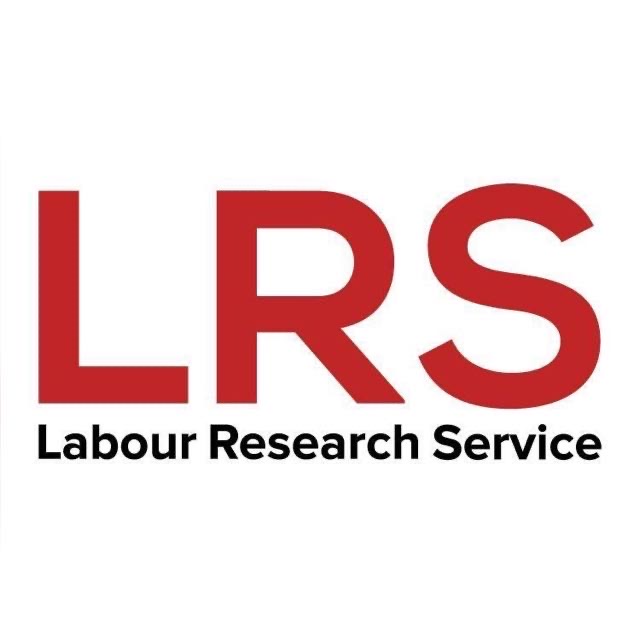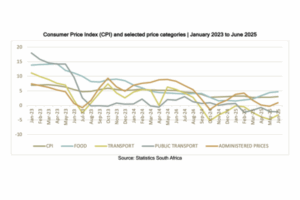As South Africa celebrates Women’s Month, Johan Botes of Baker McKenzie explores the findings of a new report highlighting the economic costs of sexual harassment and suggests ways in which the situation could be changed.
Key takeaways
- The report serves as a timely wake-up call to all of us, but especially to employers whose workplaces are not adequately dealing with this crisis.
- The cries for clear channels to report harassment echo throughout the report. It should be unacceptable in any workplace for any employee to be uncertain on how, and to whom, to report workplace sexual harassment.
In-depth
Conservatively estimated, one in four women will experience sexual harassment in the workplace at some stage during their working lifespan. The personal toll on these women – and those around them who deal with the secondary effects – is immense. The psychological impact of such harassment and victimization cannot be overstated. A recent study has undertaken the mammoth task of calculating the financial cost to women who are victims of sexual harassment in the workplace. The findings are not only shocking but serve as a grim reminder that our quest for gender equality must incorporate actions aimed at eradicating sexual harassment as the main driver of workplace inequality.
The Institute for Women’s Policy Research and Time’s Up Foundation published a report (Paying Today and Tomorrow) on charting the financial costs of workplace sexual harassment (July 2021). The research team conducted interviews with survivors of workplace sexual harassment and stakeholder experts, with the aim of understanding the short and long-term financial impact on these employees. The report assists in closing the gap in our knowledge in relation to employee costs, supplementing the various studies already produced into the costs to employers and the impact on individual health and performance.
The report highlights key areas of financial loss to the employees. It echoes results from a 2017 study that found that victims of workplace sexual harassment are more likely to face financial stress and have their career paths derailed.
- Employees pushed out of well-paid, male-dominated occupations, were likely to suffer high lifetime financial costs.
- One example highlighted the cost to an apprentice who was pushed out of the construction industry. Over her lifespan, the costs are estimated to amount to USD 1.3 million (ZAR 19.5 million)
- Even at the lower end of the remuneration spectrum, a fast-food worker who was forced out of her chosen career calculated the lifespan cost of the decision to USD 125,600 (ZAR 1.9 million)
- Survivors of workplace sexual harassment recounted the costs of cutbacks in shifts, loss of bonuses and lost promotions as factors, directly and indirectly, resulting in their reduced earnings.
- The individual cost is significantly influenced by job loss, unemployment and retaliation.
- All interviewees experienced some level of loss of work or involuntary job change.
- One case study showed a worker forfeiting USD 230,864 (ZAR 3.5 million) in salary and benefits for being forced out of the employment cycle for a year.
- Nearly all interviewees spent some time off work as a result of the trauma caused by the harassment. Many indicated that they were forced to leave as a result of a hostile workplace and retaliation following the harassment.
- Individuals often suffer losses in retirement savings and medical insurance benefits in consequence of workplace sexual harassment and retaliation.
- Many victims of workplace sexual harassment were forced to forfeit retirement fund contributions and medical aid contributions when no longer receiving the benefit of employer contributions to these schemes.
- This resulted in the individual being faced with Hobson’s Choice – picking up the tab for such costs at a time when income is reduced or forfeiting the benefit with the risks associated with such a decision.
- The report further noted the adverse impact on economic security in old age caused by forfeiture of these savings and benefits.
- Involuntary career changes could necessitate requalification or change in study direction, at a further cost to the victim.
- In one example, a woman recounted the financial cost of enrolling for a college qualification, which not only entailed the direct financial costs of tuition, but also her loss of earnings for two years spent in pursuing the new credentials.
- More than a third of the interviewees changed their careers entirely as a result of the workplace sexual harassment experienced.
- Workplace sexual harassment contributes to the gender pay gap.
- Women pushed out of well-paid, male-dominated industries were forced to take up employment in lower-paid fields or accept jobs with less certainty or regularity. IT, construction and transport were listed as examples of such industries.
- The consequential impact of workplace sexual harassment is particularly severe in respect of lower-income or vulnerable jobs.
The research highlights the impact of loss of earnings where this translates into higher financial charges, repayment of student debt, repossession of vehicles, loss of housing and reduced retirement security. Individuals in low-paid jobs are less likely to be able to absorb short-term consequential costs, which then has a longer-term impact on them.
- Workplace measures to curb sexual harassment are not working.
- Every interviewee recounted some experience of a manager, human resources representative or other accountable person failing to act or, even worse, retaliating against the harassed employee. This increased the costs of addressing the misconduct and magnified the experience of the harassment.
- Employees recounted the high cost of legal representation and frustration caused by the lack of certainty in the workplace.
- The report also notes the higher likelihood of harassment taking place along race or ethnicity divides. In the United States of America, black women are more likely to suffer workplace sexual harassment than white women. This contributes to the gender and ethnicity pay gaps when considering the financial impact of sexual harassment discussed in the report.
- There are common risk factors of sexual harassment and retaliation. Frequently cited circumstances contributing to this workplace risk include:
- Working in male-dominated industries.
- Working in physically isolated workplaces.
- Significant power imbalances, including added vulnerabilities such as immigration status.
- No clear channels for reporting harassment or retaliation.
- There is an absence of data sources to allow analysis of sexual harassment and its costs by occupation and industry.
- The report calls for urgent steps to remedy this dearth of data in order to enable us to track and arrest this scourge.
The report serves as a timely wake-up call to all of us, but especially to employers whose workplaces are not adequately dealing with this crisis. Running an awareness campaign once a year as part of Women’s Month and placing a policy on workplace harassment on the intranet, is not sufficient in our quest to meaningfully address this issue.
The cries for clear channels to report harassment echo throughout the report. It should be unacceptable in any workplace for any employee to be uncertain on how, and to whom, to report workplace sexual harassment.
Businesses are rightfully spending significant time and energy to ensure compliance with the Protection of Personal Information Act. Wouldn’t it be wonderful if we could see the same dedication to ensuring every employee understands who the designated person should be to whom allegations of sexual harassment should be reported?
Let’s see pop-ups on our computer screens requiring employees to acknowledge that they know that Jane, the Senior Vice President of the Region, is the designated person to whom any such reports should be made.
Let’s then make sure that Jane is properly trained, empowered and protected to deal with such complaints.
And should Jane turn out to be contributing to the lack of action to address reported harassment, or even be complicit in retaliating against employees reporting concerns or incidents, let’s replace her with the right person who can assist us in making visible, meaningful progress in this quest.
We owe it to ourselves, and every person who has or may become the victim of workplace sexual harassment, to do so today. Tomorrow is just not good enough anymore.
This article is re-published from Lexology. View the original version here.
Johan Botes heads the Employment and Compensation Practice at law firm Baker McKenzie.
Decisions for life: Sexual harassment – Booklet focuses on sexual harassment in the workplace and the protections available to workers.
Ending violence and harassment in the world of work is a union issue
- What will it take to build LGBT inclusive workplaces in South Africa?







